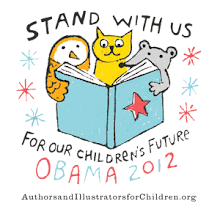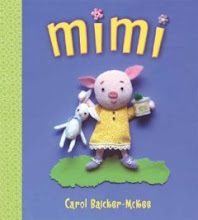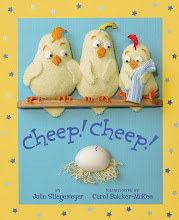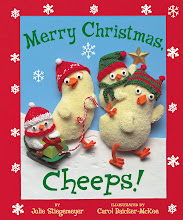- relatively easy (though a tad time-consuming),
- relaxing (a good project for while you watch TV or chat with friends/family),
- versatile,
- inexpensive, and
- impressive-looking
(I apologize for the blurry photo above. It was the only one I had of a quilled Valentine I made for a friend last year. I nearly always forget to photograph our Valentines...)
Although I'd fooled around with quilled pictures as a kid, it was an article on breathtakingly beautiful quilled Valentines in a February issue of Martha Stewart Living a few years back that sparked my interest in trying it again. You can still find step-by-step descriptions of the how-to, as well as suggestions for an assortment of quilled Valentine crafts on her website here.
I'm not going to repeat the full how-to since I don't think I could do it better than Martha, but I'll outline the materials and basic steps I used to make the Valentine above. Then you can make your own version - one of the great things about this craft is that you don't have to be a confident artist to come up with your own lovely designs or make something that looks remarkably polished.
Materials and Tools
- Paper To make the Valentine above, I cut strips from bright copier paper and lightweight cardstock. (You can purchase special strips in different widths intended for quilling, but they tend to be expensive. Since uniformity is not crucial for this project, I'd go cheap.) You'll also need a piece of heavyweight cardstock or a blank card for the background. If you don't have colored paper, don't fret: white-on-white quilling looks elegant.
- Paper cutter Or a ruler and steady hand to make your strips. (Or quilling paper already in strips.)
- Scissors For adjusting length and fringing. It's nice to have decorative scissors that scallop the edge before you fringe, but they're not essential
- Glue Ordinary white glue is perfect. (I apply it sparingly with a toothpick.) A glue stick can work too, but may not hold some of the heavier blossoms.
- Curling tool You can buy commercial quilling tools (see here), but a skewer or skinny knitting needle works pretty well too. (Inna Dorman on her interesting kids and craft blog Inna's Creations also has instructions for making a simple but effective quilling tool here.)
- Tweezers (optional) Help keep glue off your fingers and creations, but not essential unless you're working very small.
- Make a heart "frame" I used my paper cutter to make a long strip of 1/4" cardstock, folded it roughly in half and then curled the loose ends toward each other, glued them together, and bent them into a loose heart shape. I applied glue to the edges with a toothpick and arranged the heart on my blank card. (I deliberately made mine assymetrical, but you could use a heart template to make yours more perfect if you prefer.) Hold down for a minute or so until the glue sets up.
- Make an assortment of fringed flowers These will look kind of like daisies or asters. Cut strips of different colored papers in an assortment of wider widths. (Mine varied from about 1/2 inch to 3/4 inch.) I didn't bother to scallop mine, but you can. I speed up the fringing by first folding the strips and cutting through 4 layers at a time. Be careful not to cut all the way through! Roll the strips into a coil and then bend and ruffle the "petals." I used tight coils for the centers, but loose coils work too.
- Make some bell flowers The Martha site has step-by-step instructions, but basically you make a tight coil and poke in the middles, adjusting until you have a smooth "cup."
- Make a few other shape flowers I did some iris-like flowers from quilled teardrop shapes. Martha shows how, plus she has instructions for roses, which I didn't use here but have incorporated in other cards. (They're a bit more fiddly, especially for beginners or young kids.)
- Arrange the flowers within the frame I do this first to make sure I've got the space reasonably full but not overcrowded.
- Make stems and leaves No firm right or wrong way to do this. I mostly bent and loosely curled narrow green strips for the stems. Teardrops make nice leaves. Try varying sizes, with smaller leaves toward the ends of stems. Also, varied shades of green can look attractive
- Glue everything in place It takes a little time for the heavier flowers to "stick."
If you enjoy this craft and want more ideas for projects, here are a couple of good sites for inspiration and tips:
- Ann Martin's blog All Things Paper (while you're there, check out her beautiful quilled marriage certificates)
- Inna's Creations (which I mentioned above) Lots of ideas for "flat" quilled projects for both kids and adults (see here) and also cool 3-D projects (see here) to try once you master the basics.
- And if you really want to see how these techniques can be used for real art, check out the work of master quiller Yuliya Brodskaya here and here. Her stuff just blows my mind.




















1 comment:
Gorgeous! This would be fun to work on while I watch Downton Abbey! :)
Post a Comment